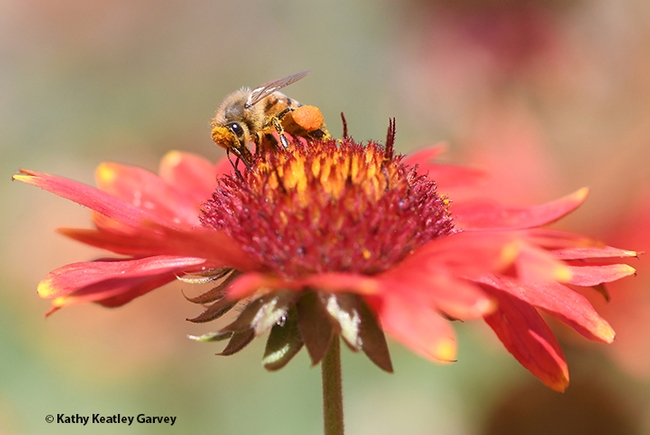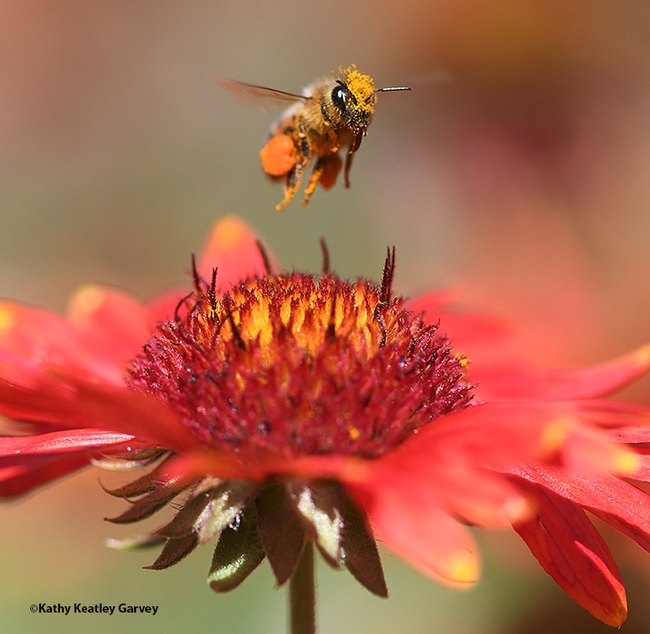Nothing says National Pollinator Week more than a honey bee coated in pollen.
Make mine yellow. Yellow pollen.
There's plenty of time to prepare. National Pollinator Week is June 21-27.
You can register your activities--make that "socially distant activities" to the official Pollinator Week events map.
You can request local buildings to light up yellow and orange in support of pollinators.
You can sign and mail proclamations to your governor in support of Pollination Week.
And, you can celebrate the week by taking an image of a pollinator.
We ventured over to the UC Davis Ecological Garden, Student Farm, Agricultural Sustainability Institute, to capture these two images of a honey bee blanketed with pollen as she foraged--appropriately--on a blanket flower, Gaillardia. The plant is a member of the sunflower family, Asteraeae, and native to North and South America.
The Pollinator Partnership, which sponsors National Pollinator Week, points out that about 75 percent of all flowering plant species "need the help of animals to move their heavy pollen grains from plant to plant for fertilization."
PP also relates that:
- About 1000 of all pollinators are vertebrates such as birds, bats and small animals.
- Most pollinators (abut 200,000 species) are beneficial insects such as flies, beetles, wasps, ants, butterflies, moths and bees.
- Pollinators are often keystone species, meaning that they are critical to an ecosystem.
Are you ready for National Pollinator Week?
Attached Images:

